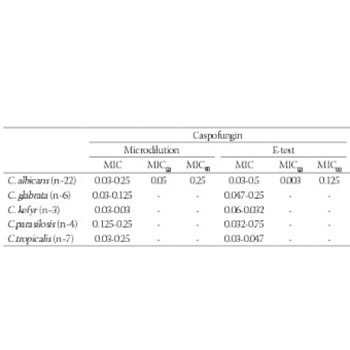Catheter-associated urinary tract infections in intensive care units at a university hospital in Turkey
DOI:
https://doi.org/10.17305/bjbms.2014.4.140Keywords:
antimicrobial, antifungal susceptibility, microdilutionAbstract
In this study, urinary catheter utilization rates, the causative agents for catheter-associated urinary tract infection (CAUTI) and their antimicrobial susceptibilities in intensive care units (ICUs) in 2009 were investigated at Gazi university hospital. We aimed to determine the causative agents and risk factors for CAUTIs, and antimicrobial susceptibilities of the pathogens; and also sensitivities of Candida spp. to antifungal agents with Microdilution and E-test. The most common etiological agents of CAUTIs were Candida spp. (34.7%). The most frequently isolated Candida spp. was C.albicans (52.4%). All C. albicans spp. were sensitive to fluconazole. Microdilution, used as a reference method to determine the sensitivity to antifungal agents, was compared with E test. E test was found to be sufficient to analyze sensitivity to amphotericin B, caspofungin, fluconazole and voriconazole, but inappropriate for itraconazole. E.coli and Klebsiella spp. were found to be causative agents for CAUTI in 20.6% and 9.9% of cases respectively. Pseudomonas spp. and Acinetobacter spp. were isolated in 14% and 8.2% of the cases, respectively. All E.coli and Klebsiella strains were found sensitive to carbapenems. Carbapenem sensitivity was found in 47.1% and 30% of the cases infected with Pseudomonas and Acinetobacter strains, respectively. According to our results, fluconazole therapy seems to be an appropriate choice for the treatment of CAUTIs caused by C.albicans. Third and fourth generation cephalosporins should not be used for empirical treatment because of the high prevalence of extended spectrum beta-lactamase production among E.coli and Klebsiella isolates.
Downloads

Downloads
Additional Files
Published
Issue
Section
Categories
License
Copyright (c) 2015 Bosnian Journal of Basic Medical Sciences

This work is licensed under a Creative Commons Attribution 4.0 International License.













